
Finding Ancient Rome
Walks in the City
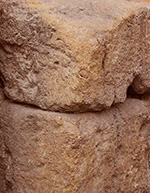
Tuff, a volcanic stone, one of Rome’s earliest construction materials.
|
This book was written because of a stone, or rather
two blocks of tuff, protruding from our house in Rome on
Via Giovanni Lanza. Those blocks had nothing to do with the building,
constructed atop and around them. Why were they left there? What was underneath the
house?
Finding the answer to that enigma started with research on the construction of this street in 1889-1897. The notes on the archaeological discoveries made at the time, today in the archives of the Soprintendenza per i Beni Archeologici di Roma, reveal the great excitement of those feverish years as the pickaxe brought more and more of the ancient city to light. |

|
||
Source: Carta Archeologica di Roma |
||
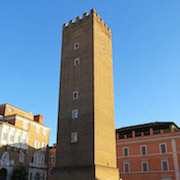
The Tower of the Capocci on Via Giovanni Lanza.
|
Following the clues extending outward from those
old stones on Via Lanza led to the huge Baths of
Trajan just beyond, whose bricks were reused by the medieval Capocci family to build their
fortress and tower.
Then the streets around them brought back Cicero and Caesar, who lived nearby, and Galen and Juvenal, whose works were on sale at the book market just below, and Livia, Octavian’s chaste and prudish wife. The portico that he built for her is just a few meters away. Ovid wrote that Livia’s portico was one of the good places to seek out “the fair girls of Rome” – was that why he ended up exiled to the Black Sea? |
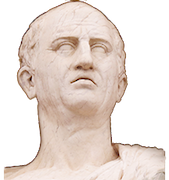 |
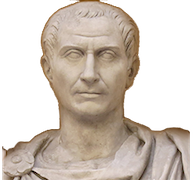 |
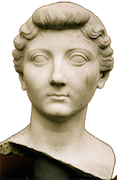 |
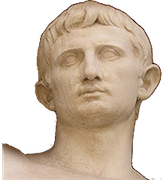 |
| Cicero, Caesar, Livia, Octavian. Portrait of Livia courtesy of C. Houbrechts, © Christoph Houbrechts Vanhoorne. | |||
These explorations of Roman history and Roman ruins ended up being unusual, because they wander through the streets and houses of the city, not always the well-known archaeological sites administered by the Soprintendenza. By necessity they rely on recent research, and as an electronic book with its vast capacity, have a better chance of avoiding the pitfalls of the superficial and the inaccurate.
The book proposes walks along the paths of traders in Rome’s earliest days, of the legions as they marched in a triumph, of a magistrate on his way to the Forum. It starts with the origins, goes on to the age of conquest, then life in the ancient city, the Empire and the extraordinary men who made it, its breakup, and finally the city’s decline. Along the way, it touches on how medieval and modern times made use of Rome’s glorious past.
About the author: Paula Landart holds a doctorate in linguistics from the Sorbonne Nouvelle. She moved to Rome in 1985.